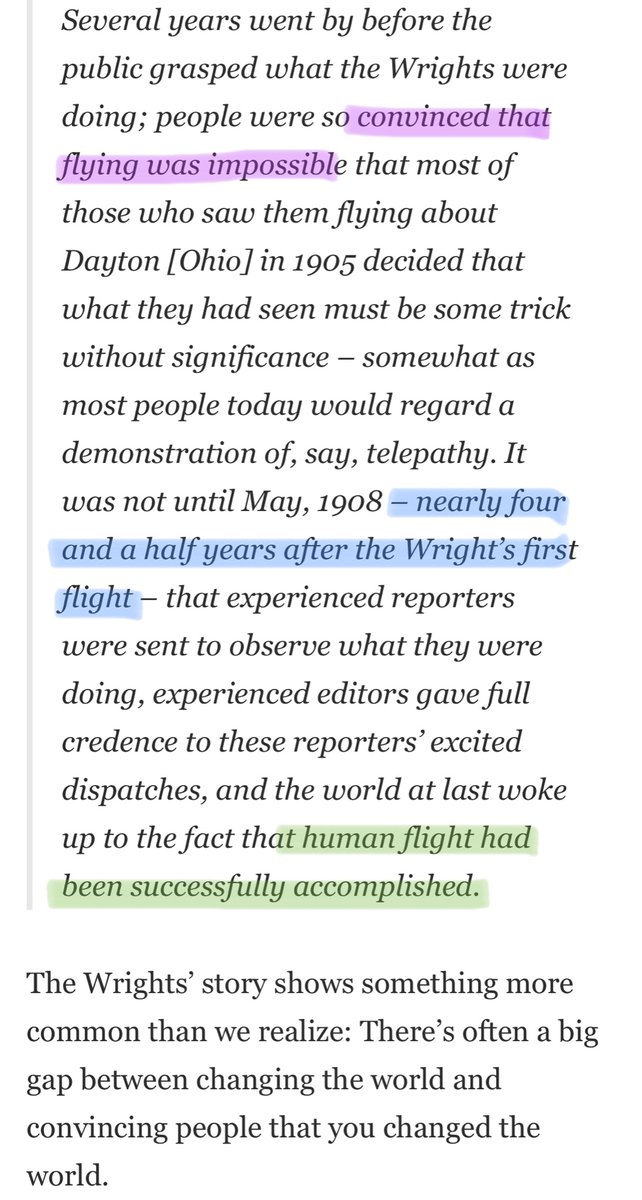History is filled with moments where science said something was impossible but people did it anyways.
My favorite example: Airplanes flew before scientists had a working theory for “heavier than air” flight — when people thought it was impossible.
My favorite example: Airplanes flew before scientists had a working theory for “heavier than air” flight — when people thought it was impossible.
The Wright Brothers may have achieved the impossible but they weren’t mentioned in the New York Times until 1906 — two years after they flew.
One year *after* the Wright Brothers flew, people thought human flight would only happen in the “very, very, very, very far future.”
One year *after* the Wright Brothers flew, people thought human flight would only happen in the “very, very, very, very far future.”
“ It takes a brilliance to change the world. It takes something else entirely to wait patiently for people to notice.”
— @MorganHousel
https://www.collaborativefund.com/blog/when-you-change-the-world-and-no-one-notices/">https://www.collaborativefund.com/blog/when...
— @MorganHousel
https://www.collaborativefund.com/blog/when-you-change-the-world-and-no-one-notices/">https://www.collaborativefund.com/blog/when...
Even the technologists are sometimes wrong about the future.
“I think there is a world market for maybe five computers.” — IBM president Thomas J. Watson, 1943
“I think there is a world market for maybe five computers.” — IBM president Thomas J. Watson, 1943

 Read on Twitter
Read on Twitter



